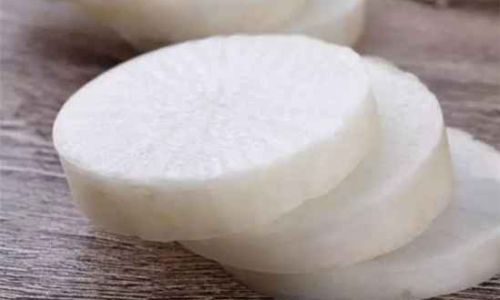Table of content
White radishes, known for their crisp texture and mildly peppery flavor, are a staple in kitchens worldwide. Whether sliced into salads, pickled for preservation, or roasted as a side dish, their versatility makes them a beloved ingredient. However, a common question lingers among home cooks and gardeners alike: Can white radishes be stored in the refrigerator? This article delves into the science of radish storage, explores the pros and cons of refrigeration, and provides actionable tips to maximize their shelf life while preserving their nutritional value and culinary appeal.
Understanding White Radishes: Composition and Spoilage Factors
Before addressing refrigeration, it’s essential to grasp why radishes spoil. White radishes (Raphanus sativus) are root vegetables rich in water (about 95%), which contributes to their juiciness but also makes them prone to dehydration. Their skin, though thin, acts as a protective barrier against pathogens and moisture loss. However, once harvested, radishes begin to lose firmness as their cells age, a process accelerated by improper storage.
Key Spoilage Drivers:
- Ethylene Gas: Radishes are sensitive to ethylene, a natural plant hormone emitted by fruits like apples and bananas. Exposure accelerates ripening and decay.
- Moisture Loss: Dry environments cause radishes to wilt, becoming limp and less palatable.
- Microbial Growth: Bacteria and fungi thrive in warm, humid conditions, leading to mold or rot.
- Chilling Injury: Temperatures below 32°F (0°C) can damage radish cells, causing pitting, discoloration, or a mushy texture.
Refrigeration 101: Benefits and Drawbacks
The refrigerator is a go-to tool for extending produce life, but its effects on radishes require careful consideration.

Pros of Refrigeration
- Slowed Respiration: Cold temperatures (32–36°F / 0–2°C) reduce metabolic processes, delaying spoilage.
- Microbial Suppression: Bacteria and fungi grow slower in chilled environments, reducing rot risk.
- Convenience: Refrigerators offer a controlled space, shielding radishes from ethylene-producing neighbors.
Cons of Refrigeration
- Dehydration Risk: Fridges have low humidity, which can dehydrate radishes unless stored properly.
- Chilling Sensitivity: Prolonged exposure to near-freezing temperatures may cause texture issues.
- Flavor Alteration: Some users report a slight bitterness after refrigeration, though this is debated.
How to Store White Radishes in the Refrigerator
Proper preparation and packaging are critical for successful refrigeration. Follow these steps:
-
Harvest or Purchase Wisely:
- Choose radishes with firm, unblemished skin and vibrant green tops (if attached).
- Avoid radishes with soft spots or cracked skin, as they spoil faster.
-
Pre-Storage Preparation:
- Trim the Greens: Leave ½ inch of stems to prevent moisture loss but remove leaves, which draw moisture from the root.
- Wash Gently: Rinse under cold water to remove dirt, but dry thoroughly to prevent excess moisture.
-
Packaging Methods:

- Perforated Plastic Bags: Punch small holes in a plastic bag to balance humidity and airflow.
- Damp Paper Towels: Wrap radishes in a slightly damp towel to maintain moisture without sogginess.
- Airtight Containers: Use containers lined with paper towels to absorb excess moisture.
-
Placement:
- Store in the crisper drawer, away from ethylene-producing fruits like apples or avocados.
- Avoid the coldest rear of the fridge, where temperatures may dip below freezing.
Alternative Storage Methods: Beyond the Refrigerator
While refrigeration is effective, it’s not the only option. Consider these alternatives:
Root Cellar or Cool Pantry
- Ideal Conditions: 32–40°F (0–4°C) with 90–95% humidity.
- Method: Bury radishes in damp sand or sawdust in a dark, ventilated container.
- Lifespan: Up to 3–4 months.
Water Storage
- Submerge radishes in a jar of cold water, changing the water daily.
- Lifespan: 1–2 weeks.
Freezing
- Blanch whole radishes for 2–3 minutes, cool, and freeze in airtight bags.
- Best For: Cooked dishes (soups, stews), as texture becomes soft upon thawing.
How Long Do White Radishes Last?
Storage duration varies by method:
- Refrigerated: 2–4 weeks (properly packaged).
- Root Cellar: 3–4 months.
- Countertop: 3–5 days (prone to wilting).
- Frozen: 8–12 months.
Signs of Spoilage: When to Toss Radishes
Discard radishes if they exhibit:

- Soft Spots or Shriveling: Indicative of dehydration or decay.
- Mold or Slime: A clear sign of bacterial or fungal growth.
- Off Odors: A pungent, sulfuric smell suggests spoilage.
- Extreme Discoloration: Dark patches or translucent skin.
Creative Ways to Use Aging Radishes
Even slightly wilted radishes can be repurposed:
- Pickling: Ferment or brine radishes for a tangy, crunchy snack.
- Roasting: Toss with olive oil, salt, and herbs; roast until caramelized.
- Soups and Stews: Add diced radishes to broths for texture.
- Radish Top Pesto: Blend greens with nuts, cheese, and oil for a nutrient-rich sauce.
Debunking Myths: Common Misconceptions
-
Myth: Refrigeration ruins radish flavor.
Reality: While some detect subtle changes, proper storage minimizes this. Flavor alteration is more likely due to age than refrigeration. -
Myth: Radishes must be stored with greens attached.
Reality: Removing greens prevents moisture loss and extends shelf life. -
*Myth: All radishes respond the same to storage.
Reality: Smaller varieties (e.g., cherry belle) may wilt faster than larger types (e.g., daikon).
The Science Behind Radish Longevity
Radishes contain enzymes that break down cell walls over time, a process hastened by warmth and light. Refrigeration slows enzyme activity, preserving crispness. However, cold temperatures can damage cell membranes if not buffered by proper humidity. This is why packaging is key—it creates a microenvironment that balances moisture and airflow.
Comparative Analysis: White Radishes vs. Other Root Vegetables
| Vegetable | Ideal Refrigeration Temp | Shelf Life (Refrigerated) | Best Storage Method |
|---|---|---|---|
| Carrots | 32–36°F (0–2°C) | 3–4 weeks | Damp paper towel in perforated bag |
| Turnips | 32–36°F (0–2°C) | 2–3 weeks | Same as radishes |
| Beets | 32–36°F (0–2°C) | 2–4 weeks | Remove greens, store in plastic bag |
| Potatoes | 45–50°F (7–10°C) | 1–2 months | Cool, dark pantry (not fridge) |
Expert Tips for Radish Enthusiasts
- Grow Your Own: Harvest radishes early in the morning when they’re crispest.
- Use a Humidity Drawer: Most modern fridges have adjustable humidity crispers—set to “high” for radishes.
- Test Regularly: Check stored radishes weekly for signs of spoilage.
- Repurpose Greens: Radish tops are edible; sauté them like spinach or add to smoothies.
Conclusion: To Refrigerate or Not to Refrigerate?
The answer depends on your timeline and resources. For short-term use (2–4 weeks), refrigeration is a reliable, space-saving option. For long-term storage, a root cellar or freezer is preferable. Regardless of the method, proper preparation—trimming greens, controlling moisture, and avoiding ethylene sources—is non-negotiable.
White radishes, like all produce, are living organisms that respond to their environment. By understanding their biology and tailoring storage practices accordingly, you can enjoy their crunch and flavor for weeks, reducing waste and maximizing your garden’s or market’s bounty. Whether sliced thin in a summer salad or simmered in a winter stew, well-stored radishes remain a testament to the art of mindful cooking.





0 comments